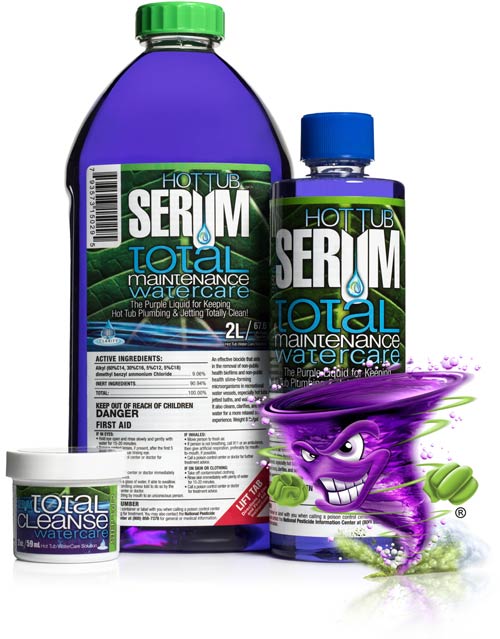Since the Fall of 2020 we have seen a severe hot tub chlorine shortage1. Demand is up and Supplies are low which begs the question – how can you reduce the chlorine demand in your hot tub?
Reducing Chlorine Demand in Hot Tubs
To understand how to reduce chlorine demand in your hot tub we need to first discuss what chlorine is doing in your hot tub and how it works.
Chlorine is a Sanitizer
Though commonly called “chlorine,” the actual sanitizing agent in your hot tub (or pool) water is hypochlorous acid (chemically known as HClO). You’ll note that this HClO molecule combines hydrogen, chlorine, and oxygen. Water is of course H2O, or a combination of hydrogen and oxygen. Hypochlorous acid forms when chlorine is added to water.
Hypochlorous acid is a very potent sanitizer and kills bacteria & other pathogens in your spa water by rupturing the cell wall of these single-cell organisms.
Chlorine is an Oxidizer
However, chlorine has another purpose in your hot tub. The hypochlorous acid molecule includes an oxygen atom. Due to this oxygen atom, hypochlorous acid is also an oxidizer, removing some of the biological waste in your hot tub water. Ozone and potassium monopersulfate (also known as non-chlorine-based shock) are also oxidizers used to eliminate the biological waste in your spa water.
Four Strategies to Reduce Chlorine Demand in Your Hot Tub
With two major roles in keeping your hot tub water clean & clear, chlorine can be rapidly depleted in your spa. Throw in today’s limited inventories of chlorine and you can have quite a problem keeping your spa safe & inviting to use by you, your family & friends. However, these four strategies will reduce your need for chlorine.
- Keep the pH of your hot tub water in the proper range of 7.2 – 7.6
The killing efficacy of chlorine is very dependent on pH. pH above 7.6 will greatly reduce the ability of the chlorine in your spa to kill bacteria and other pathogens resulting in you using more chlorine. That’s what you don’t want! - Use Serum Total Maintenance
Serum Total Maintenance provides many benefits to improve your spa operation but two big benefits are these. First, Total Maintenance is a secondary, back-up sanitizer. It’s taking some of the load off the chlorine and ensuring your spa water remains pure, pristine, and inviting. AND Total Maintenance is EPA Registered for this purpose. It’s the only product that is! Second, Total Maintenance is a strong pH buffer. pH buffers help “lock-in” the pH in your spa water. The result is Total Maintenance also helps the chlorine in your spa be most effective, reducing your chlorine demand. - Replace your spa water every 3 months
This may seem a bit counter intuitive but changing your spa water every 3 months will reduce your chlorine demand. How is that you say? The most commonly used form of chlorine in hot tubs is dichlor. Dichlor is nearly 50% another chemical called cyanuric acid or CYA. CYA helps the chlorine last longer, but it also reduces its killing efficacy. As you keep adding dichlor to your spa, you increase the concentration of CYA which further reduces chlorine’s ability to rid your spa of bacteria and biological waste. You need to replace your spa water to remove this excess CYA. - Purge your spa annually with Serum Total Cleanse
Lastly, unless you are quite fastidious in maintaining your hot tub, you will be developing biofilm in your spa’s plumbing. This biofilm can greatly increase the sanitation load in your spa and thereby increase the chlorine demand. Purging your spa annually with Total Cleanse will remove this biofilm. Note that there are quite a few spa purges available, but none are as effective as Total Cleanse.
1Why is there a severe hot tub chlorine shortage? It’s primarily been caused by two issues.
First, the demand for all backyard products and particularly pools and hot tubs has exploded since the COVID-19 pandemic forced us all to stay at home. And though most of these restrictions have since been lifted, a major shift to working from home has kept the American public very interested in improving and upgrading their homes. All these new pools and hot tubs also require sanitation, hence the demand for chlorine remains high.
Second, in August 2020, a major chlorine plant in Alabama was destroyed by fire. This plant produced close to 35% of all the chlorine in the US. It is currently projected to be rebuilt and back on-line in early 2023.






